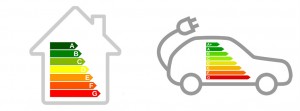Aim of the project
The project CATCH provides a comprehensive evaluation how energy efficiency technologies and policies impact private energy consumption, private welfare, the economy and the environment. Furthermore CATCH analysis why certain rebound effects and market imperfections occur and gives Austrian decision makers based on these insights recommendations on adjusting and expanding current policies in order to tap their full potential for long-term reductions in carbon emissions. In particular CATCH aims to understand the barriers for implementing energy efficiency technologies, assess the rebound effect induced by specific energy efficiency technologies in households and analysis why previous energy efficiency policies have performed differently than expected and how these insights can be incorporated in policy design.
From the broad scope of possible energy efficiency improvements, this study focuses on heating demand (building insulation, heating system based on renewable energy) and mobility (cars with alternative propulsion systems), since both areas of energy consumption contribute substantially to carbon emissions in Austria, but allow comparing two different cases regarding investment cycle and policy relevance.

Methodological approach
Methodologically we go beyond the existing research applying an integrated approach that comprises quantitative and qualitative methods and connects explanatory models with implementation processes. In particular we link an empirical survey on household behaviour, a macroeconomic model for policy impact analysis and a system model integrating core determinants of the performance of energy efficiency policy options. These complementary modelling approaches are specifically designed to tackle the full complexity of the addressed issue and are linked via parameter exchange and actor level specific insights.
We start with the system map which defines the policy scope and the system to be analysed including involved actors, policy instruments and contextual variables. Methodologically we conduct a systematic literature review comprising national and international funding programmes and their implementation as well as governance processes and relevant regulations. Complementarily, we interview policymakers and agencies about the implementation process of policy instruments, about their interdependencies with other stakeholders as well as about direction and magnitude of contextual factors. Thereby the system map provides information about contextual factors which influence household behaviour to the empirical survey as well as policy options and technological/economic pathways as input to the macroeconomic model.
At household level we conduct an empirical survey of adopters of innovative vehicle technologies on the one hand, and of households who retrofitted their building to reduce heating demand on the other hand. This survey population provides first-hand, real-world insights how energy efficiency technologies affect energy conservation behaviour. By comparing their historical energy bills and technical data with current energy demand, we estimate the amount of the direct rebound effect. In addition, the survey tests and illustrates contextual factors which influence the adoption of technologies and policies (connecting to the integrated system assessment) as well as determines the extent of rebound and habits (connecting to the macroeconomic model).
The macroeconomic model of the recursive-dynamic single-country CGE (Computable General Equilibrium) type illustrates the impacts of policy and technology (scenarios and assumptions provided by the system map) on macroeconomic indicators, output of economic sectors, welfare of private households and environmental accounts (e.g. emissions reduction) . The CGE model focuses on the demand side of private households and incorporates different household-types where the utility functions differ regarding the amount of the direct rebound, elasticity of demand and the process of habit formation (identified in the empirical survey). Within the macroeconomic analysis quantitative estimates can be obtained for both immediate and long-term effects (persistence) of policy instruments on the targets and other sectors (unintended indirect effects) – including magnitude and direction of the indirect and the economy-wide rebound effect. The output of the CGE model on these scenarios then informs key aspects of the following integrated system assessment.
The integrated system assessment is the centre of CATCH’s modelling chain and is the crucial link between all models and methods. It illustrates the targeted actor network and depicts how the agendas and relationships of different actors react to broader context changes or different policy instruments, even if they are not directly targeted by the specific policy. The integrated system assessment gives an overall picture of the transitional processes when energy efficiency policies are translated into real-world reductions in energy consumption and carbon emissions.
In the end CATCH provides a policy evaluation scheme based on a matrix of qualitative and quantitative indicators. Applying this matrix, the project outlines a comprehensive policy road map for energy efficiency policy options and their respective trade-offs and synergies. Particular focus will be put on the demand of provincial governments for strategic, institutional and social support when dealing with challenges of energy efficiency policy. Further important aspects as financial issues, conflicting goals from associated policy arenas, etc. will be taken into account. To address synergies and avoid conflicts, cross-sectoral issues will be addressed especially regarding the policy fields regional business development, energy supply and spatial planning.